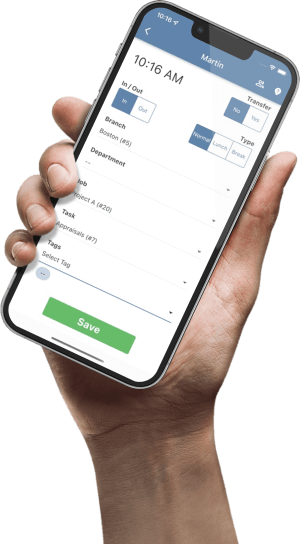Free Eisenhower Matrix
Add a New Task
Delegate Task
Eisenhower Matrix
Do First
(Important & Urgent)
- Task 1
Do Later
(Important & Not Urgent)
- Task 1
Delegate
(Not Important & Urgent)
- Task 1
Eliminate
(Not Important & Not Urgent)
- Task 1
Found our Free Eisenhower Matrix useful? Bookmark and share it.

How to Use the Eisenhower Matrix
The Eisenhower Matrix, also known as the Urgent-Important Matrix, is a powerful tool for prioritizing tasks and managing your time effectively. It helps you distinguish between what’s truly important and what’s merely urgent, allowing you to focus on activities that contribute to your long-term goals. Here’s a step-by-step guide to using the matrix:
List All Your Tasks
- Start by creating a comprehensive list of all the tasks, activities, and responsibilities you need to address. This could include work projects, personal errands, household chores, and anything else that demands your attention.
- Don’t worry about prioritizing at this stage; simply write everything down.
Assess Urgency and Importance
- For each task on your list, ask yourself two critical questions:
- Is it urgent? An urgent task requires immediate attention and has a time-sensitive deadline.
- Is it important? An important task contributes to your long-term goals and values.
- Rate each task based on these two criteria.
Categorize Tasks into Four Quadrants
Based on your assessments, place each task into one of the four quadrants of the Eisenhower Matrix:
- Quadrant 1: Do First (Urgent and Important):
- These are critical tasks that need immediate attention.
- Examples: Crises, deadlines, emergencies.
- Action: Address these tasks right away.
- Quadrant 2: Do Later (Important but Not Urgent):
- These are tasks that contribute to your long-term goals but don’t require immediate action.
- Examples: Planning, relationship building, exercise, learning.
- Action: Schedule these tasks into your calendar.
- Quadrant 3: Delegate (Urgent but Not Important):
- These are tasks that demand immediate attention but don’t contribute significantly to your goals.
- Examples: Some meetings, interruptions, minor requests.
- Action: Delegate these tasks to someone else whenever possible.
- Quadrant 4: Eliminate (Not Urgent and Not Important):
- These are tasks that are neither urgent nor important and are often distractions.
- Examples: Time-wasting activities, unnecessary meetings, excessive social media.
- Action: Eliminate these tasks from your schedule.
Take Action
Once you’ve categorized your tasks, take appropriate action based on each quadrant:
- Do First: Tackle these tasks immediately and prioritize them above all others.
- Do Later: Schedule specific times for these tasks and treat them as appointments.
- Delegate: Identify individuals who can handle these tasks and delegate them effectively.
- Eliminate: Remove these tasks from your to-do list and avoid them in the future.
Review and Adjust
- Regularly review your Eisenhower Matrix to ensure it remains relevant and effective.
- As priorities change, adjust the placement of tasks within the quadrants.
- Continuously evaluate your time management strategies and make improvements as needed.
The History of the Eisenhower Matrix
The Eisenhower Matrix, a cornerstone of time management and productivity, owes its origins to the 34th President of the United States, Dwight D. Eisenhower. While he didn’t formally create a matrix on paper, his approach to decision-making and task prioritization laid the foundation for what we know today.
Eisenhower's Principle
Eisenhower, a highly productive individual who managed countless critical decisions during his military and political career, was known for his ability to distinguish between the urgent and the important. He famously stated:
“What is important is seldom urgent and what is urgent is seldom important.”
This simple yet profound observation encapsulates the essence of the matrix that bears his name. He understood that many pressing tasks were not necessarily the most valuable, and conversely, many crucial activities were often overlooked because they lacked immediate urgency.
The Development of the Matrix
While Eisenhower’s principle was well-known, the visual representation of it in a 2×2 matrix format emerged later. It’s difficult to pinpoint the exact origin of the formalized matrix, but it gained popularity through various self-help and time management books and seminars.
Stephen Covey's Influence
Stephen Covey, author of the influential book “The 7 Habits of Highly Effective People,” played a significant role in popularizing the Eisenhower Matrix. Covey incorporated the concept into his framework, emphasizing the importance of focusing on Quadrant 2 (Important but Not Urgent) activities for long-term effectiveness. He presented the matrix as a powerful tool for aligning actions with values and goals.
Modern Adaptations
Over time, the Eisenhower Matrix has been adapted and refined, with various authors and productivity experts adding their own insights and interpretations. The rise of digital tools and apps has further facilitated its use, allowing individuals to easily categorize and manage their tasks.


The Elements of the Eisenhower Matrix Explained
The Eisenhower Matrix is structured around four distinct quadrants, each representing a unique combination of urgency and importance. Understanding these elements is crucial for effectively utilizing the matrix and maximizing your productivity.
Quadrant 1: Do First (Urgent and Important)
- Characteristics:
- These tasks demand immediate attention.
- They are often crises, deadlines, or pressing problems.
- Failure to address these tasks can have significant consequences.
- Examples:
- Meeting critical project deadlines.
- Responding to emergencies or crises.
- Addressing urgent health issues.
- Action:
- Handle these tasks immediately and prioritize them above all others.
- Don’t procrastinate or delay these tasks.
Quadrant 2: Do Later (Important but Not Urgent)
- Characteristics:
- These tasks contribute to your long-term goals and values.
- They are often related to planning, prevention, and relationship building.
- These tasks are crucial for long-term success, but they don’t have immediate deadlines.
- Examples:
- Strategic planning.
- Relationship building.
- Personal development and learning.
- Exercise and healthy habits.
- Action:
- Schedule these tasks into your calendar and treat them as appointments.
- Allocate dedicated time for these activities to prevent them from being neglected.
- Focus on these tasks to avoid future urgent problems.
Quadrant 3: Delegate (Urgent but Not Important)
- Characteristics:
- These tasks require immediate attention but don’t contribute significantly to your goals.
- They are often interruptions, distractions, or minor requests.
- These tasks can consume a lot of time and energy if not managed effectively.
- Examples:
- Some meetings and emails.
- Routine tasks that can be handled by others.
- Interruptions from colleagues or friends.
- Action:
- Delegate these tasks to someone else whenever possible.
- If delegation is not possible, try to minimize the time spent on these tasks.
- Learn to say no to requests that don’t align with your priorities.
Quadrant 4: Eliminate (Not Urgent and Not Important)
- Characteristics:
- These tasks are neither urgent nor important and are often time-wasting activities.
- They are distractions that prevent you from focusing on more important tasks.
- These tasks offer little to no value and should be avoided.
- Examples:
- Excessive social media use.
- Unnecessary meetings or activities.
- Mindless browsing or entertainment.
- Action:
- Eliminate these tasks from your schedule and avoid them altogether.
- Identify and minimize distractions that fall into this quadrant.
- Focus your time and energy on more productive activities.
How to Place Tasks into the 4 Quadrants of the Eisenhower Matrix
Effectively using the Eisenhower Matrix hinges on accurately placing your tasks into the correct quadrants. This requires a clear understanding of urgency and importance. Here’s a breakdown of how to analyze and categorize your tasks:
Define Urgency and Importance
- Urgency:
- A task is urgent if it demands immediate attention.
- It often involves a time-sensitive deadline or a pressing need.
- Think: “Does this need to be done right now?”
- Importance:
- A task is important if it contributes to your long-term goals and values.
- It aligns with your priorities and has a significant impact.
- Think: “Will this help me achieve my long-term objectives?”
Analyze Each Task
- For every task on your to-do list, ask yourself these two critical questions:
- “How urgent is this task?”
- “How important is this task?”
- Be honest and objective in your assessment. Avoid letting emotions or immediate pressures cloud your judgment.
Use the Following Guidelines to Categorize Tasks
- Quadrant 1: Urgent and Important (Do First):
- Tasks with immediate deadlines and significant consequences.
- Crises, emergencies, and unexpected problems.
- Tasks that directly impact your core responsibilities.
- Look for words and phrases like: “deadline,” “critical,” “emergency,” “immediate,” “must be done now.”
- Quadrant 2: Important but Not Urgent (Do Later):
- Tasks that contribute to your long-term goals but lack immediate deadlines.
- Planning, preparation, relationship building, and personal development.
- Tasks that prevent future problems or crises.
- Look for words and phrases like: “planning,” “strategy,” “development,” “prevention,” “long-term.”
- Quadrant 3: Urgent but Not Important (Delegate):
- Tasks that demand immediate attention but don’t align with your priorities.
- Interruptions, distractions, and routine tasks that can be handled by others.
- Tasks that often consume time without adding significant value.
- Look for words and phrases like: “interruption,” “request,” “minor task,” “can be done by someone else.”
- Quadrant 4: Not Urgent and Not Important (Eliminate):
- Tasks that are neither time-sensitive nor aligned with your goals.
- Time-wasting activities, distractions, and unnecessary tasks.
- Tasks that offer little to no value.
- Look for words and phrases like: “distraction,” “time-wasting,” “unnecessary,” “avoid.”
Consider Context and Priorities
- The placement of a task can vary depending on your specific context and priorities.
- What is important to one person may not be important to another.
- Regularly review your priorities and adjust the placement of your tasks accordingly.
- For example, answering a phone call is urgent, but is it important? If the call is from your childs school, then it is both. If it is a spam call, it is neither.
Use the Tool Provided
- Use the provided program to input the due date, and importance of the task.
- The program will use the provided logic to place the task into the correct quadrant.
- This will remove a lot of the guess work.
Regularly Review and Adjust
- Priorities can change, so it’s essential to regularly review and adjust your Eisenhower Matrix.
- As you complete tasks, remove them from the matrix and add new ones.
- Continuously evaluate your time management strategies and make improvements as needed.

Disclaimer: The content provided on this webpage is for informational purposes only and is not intended to be a substitute for professional advice. While we strive to ensure the accuracy and timeliness of the information presented here, the details may change over time or vary in different jurisdictions. Therefore, we do not guarantee the completeness, reliability, or absolute accuracy of this information. The information on this page should not be used as a basis for making legal, financial, or any other key decisions. We strongly advise consulting with a qualified professional or expert in the relevant field for specific advice, guidance, or services. By using this webpage, you acknowledge that the information is offered “as is” and that we are not liable for any errors, omissions, or inaccuracies in the content, nor for any actions taken based on the information provided. We shall not be held liable for any direct, indirect, incidental, consequential, or punitive damages arising out of your access to, use of, or reliance on any content on this page.
Trusted By
Trusted by 3.2M+ Employees: 21 Years of Service Across Startups to Fortune 500 Enterprises
Join our ever-growing community of satisfied customers today and experience the unparalleled benefits of TimeTrex.










Strength In Numbers
Join The Companies Already Benefiting From TimeTrex
Time To Clock-In
Start your 30-day free trial!
Experience the Ultimate Workforce Solution and Revolutionize Your Business Today
- Eliminate Errors
- Simple & Easy To Use
- Real-time Reporting

Saving businesses time and money through better workforce management since 2003.
Copyright © 2025 TimeTrex. All Rights Reserved.
